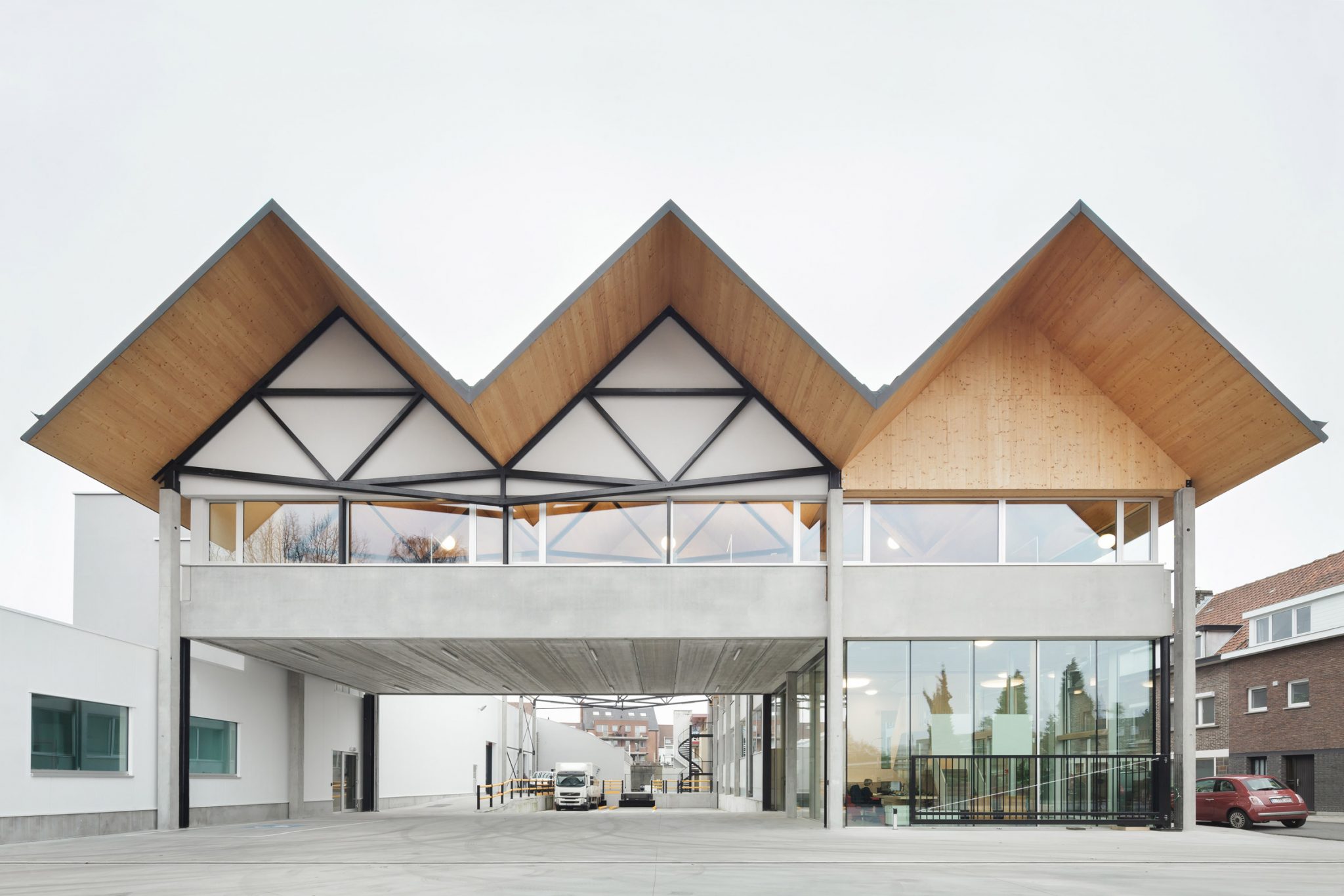Ten Beautiful Factories Around the World
Functional, cold and industrial are words usually associated with factories. They are buildings you wouldn’t consider to boast good looks and cutting-edge design, until now.
TrucksandTrolleys.co.uk studied factories from across the globe, taking into account how the building represents the brand and how it fits within their local environment. The design awards the buildings and their architects have won, the creative technology they contain and how that works with the building were all contributing factors to the final list. And lastly what makes any of us beautiful, the unique quirks. From factories producing furniture, fine wines and 747’s, here are the top ten most beautiful of those buildings, in the world.
Who: Ryhove, food packaging
Where: Central Ghent, Belgium
Architect: TRANS
Perfectly complementing it’s setting of nearby terraced houses, this pitched roof factory was deliberately built in the town inhabited by most of it’s employees, so as not to add an out of town commute to their day. Built on it’s 1980’s original site, the architects transformed the layout to ensure logistics facilities are on display, and the timber lined roof keeps the building feeling warm and comfortable, much like the homes it nestles next to.

Who: Vitsoe, furniture manufacturer
Where: Warwickshire, UK
Architect: Waugh Thistleton
Intentionally unfinished, this new head quarters and production facility for British furniture brand Vitsoe, features cross laminated timber, saw toothed roof and modular construction, perfectly complimenting the modular furniture they are famous for. It boasts large windows that frame the landscape and allow passersby to glimpse inside, as well as sky lights illuminating the work spaces, encouraging collaboration between teams. The open-plan space available also hosts a local dance-circus company.

Who: Bang & Olufsen
Where: Struer, Denmark
Architect: Jan Søndergaard of KHR Architects
Acting as the companies head quarters, this building was designed to mimic the iconic Bang and Olfsen products, contrasting between transparency and translucency. Seemingly suspended above grass with only Sheep for close neighbours, the aptly named ‘The Farm’ contains the world’s largest private electro-acoustic measurement facility, which even has it’s own mock-living room so employees can test products in a life-like setting.

Who: Optimo Hat Factory
Where: Chicago, US
Architect: Skidmore, Ownings & Merrill
Taking residence in a 100 year old decommissioned firehouse, Optimo design and manufacture their hats using mid 20th century techniques. It’s only right their home reflects their values so well, retaining historic features and matching them to modern interiors solutions using blackened steel, walnut and cork. Porthole windows have been created where fire poles once were, enabling visitors to see the busy workroom below.

Who: Bodegas Protos Winery
Where: Valladolid, Spain
Architect: Rogers Stirk Harbour + Partners
Designed by a UK architect firm in 2008, this Spanish winery sits partially buried in the ground to house storage and fermentation vats. Intended to be light and airy, the five parabolic vaults succeed by connecting to each other, and the wine is kept cool from the thermal ground mass, low night time temperature and shading system the building contains. To top the list of impressive features, there is a sunken garden that brings natural light to the offices and picture perfect views of nearby Penafiel Castle.

Who: San Pellegrino bottling plant
Where: San Pellegrino Terme, Italy
Architect: BIG
With design plans approved at the end of 2017, this factory is yet to be built, but more than worthy of it’s place in the list. The brief was to redesign the historic factory bottling plant and winning firm BIG, proposed huge dome structures to frame the alpine landscape. Lots of glass letting in huge amounts of light and not imposing on the beautiful surroundings, make this factory in their words, “the aquatic version of a wine cellar”.

Who: Volkswagen Transparent Factory
Where: Dresden, Germany
Architect: Henn Architekten
Constructed in 2001 and made nearly entirely of glass this VW factory was designed to ensure the production process was transparent to everyone. It has good environmental credentials too, with no chimneys, loud noise or chemical waste emitted. Probably the only factory on this list the general public are free to visit, it can hold up to 250 visitors and often hosts events and exhibitions. It would be well worth a visit to see the final location for the assembly of Volkswagon cars.

Who: Recycling & Energy Recovery Facility
Where: Leeds, UK
Architect: Jean-Robert Mazaud of S’pace Architects
The first thing you’ll notice about this building is how striking it is, with huge living walls to encourage wildlife and imposing timber arches and a steel roof that glistens in the sun. But this building is truly unique, the first energy recovery centre recycle household waste before it is processed into energy. Winning project of the year at the National Structural Timber Awards for it’s European Larch beams, which are of course, a sustainable material, in keeping with the buildings primary function.

Who: Boeing Manufacturing Site
Location: Everett, Washington
Architect: Boeing
What this factory lacks in traditional beauty, it more that makes up for by being a sight that takes your breath away. Manufacturing 747, 767, 777, 787 and the Dreamliner aeroplanes, this naturally has to be the largest building in the world by volume, at 472 million cubic feet. Astonishingly this place has its own fire department, medical clinic, water treat went plant, security force and electrical substations. All that roof space collects a lot of rain water, so there is also a system of cleverly engineered wetlands and holding ponds, with a 20 million gallon capacity.

Who: Cristalchile
Location: Llay-Llay, Chile
Architect: Guillermo Hevia
This glass bottle factory uses bioclimatic technologies, which means it’s optimised for natural ventilation and uses the area’s winds to reduce the energy consumption of the building. It’s curved roof mimics the rolling hills behind it, and glass panels reflect the open water. It’s another factory that has made the production process transparent, a trend we’re likely to see increase in industrial buildings of the future.




